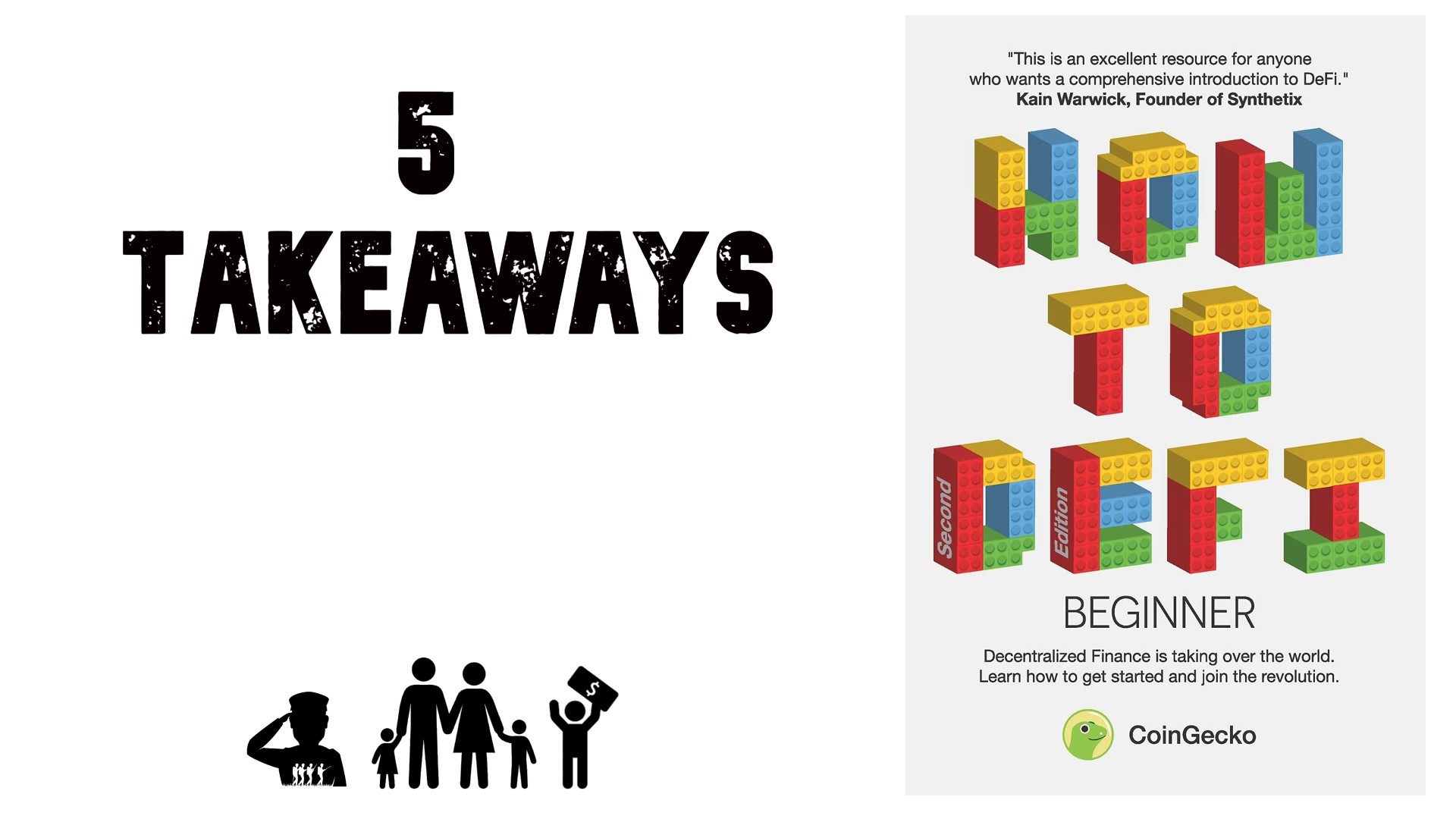“How to DeFi-Beginner” by the Coin Gecko team is a crash course in everything relating to decentralized finance. If you don’t know, decentralized finance is becoming the main form of finance globally.
Yes, yes. It may take 50 years, but the pros of the decentralized system will outweigh the cons. Right now, DeFi is in its infancy. There are many things to work out, improve upon, and iterate on. However, every human could access decentralized finance, ensuring entrepreneurs continue to build out the DeFi system.
What is DeFi exactly? DeFi is a word that encompasses many types of services across banking, investing, insurance, and governance. The old, traditional banking system is called TradFi in the crypto-verse. So what would you consider TradFi? Savings, financing, insurance, stock market, bonds, payments, etc.
All of these “services” will carry over to DeFi. The main difference is that DeFi apps write everything on the blockchain, which means that the need for a middle-man is either reduced or non-existent. The middle-man is Wells Fargo for savings, Charles Schwab for investing, Geico for insurance, and Visa for payments, for example.
With DeFi, you connect your decentralized wallet to the service you want to interact with, and there you have it. Yes, that means there are some risks, but you no longer have a gatekeeper telling you what to do and how to do it. Amazing stuff. Let’s get into my five takeaways.
1) Borrowing and lending are done using collateral. Instead of credit scores and loan officers, you just put up a large amount of collateral and take the coin you need. For example, you put up 6 ETH to borrow 2 ETH. This keeps your 6 ETH on the blockchain and gives you fresh capital.
2) Payment streaming allows payments to be handled in real-time—down to the second. For example, if my employer pays me $60/hr, I can watch each minute as they deposit $1 into my account. Payment streaming will be great for people who live paycheck to paycheck.
3) Governance involves coin holders being able to vote for initiatives and the future of different protocols. Voting is all done on-chain, and no one can manipulate the blockchain, unlike other archaic voting systems.
I Bought a Kindle Oasis
4) Yield-farming coins are coins that seek out the best place to store your crypto. Yields change almost daily, but instead of searching by yourself, have your yield-farming coins do it for you.
5) As people can borrow money by using collateral, others can earn yield by providing liquidity to the borrowed. The lender gets gains by allowing others to borrow money. No names and faces are required. You only need to deposit your desired coins and let the interest accumulate.
DeFi is the wave of the future, and it has never been a better time to invest in crypto. I still need to get my decentralized wallet and get started on DeFi. I have been hyper-focused on my eBooks, but I will get there.
In the meantime, I am learning so much about cryptocurrencies and DeFi. If you want a one-stop-shop on all things DeFi, then “How to DeFi” is your book.

Leave a Reply